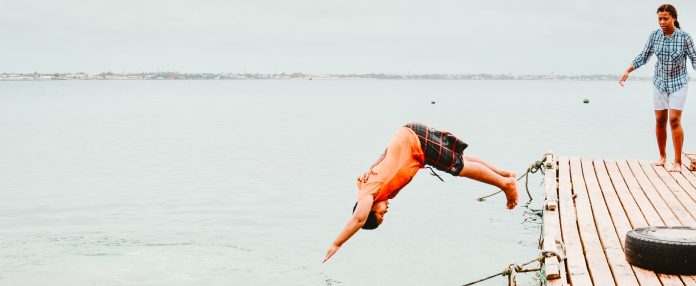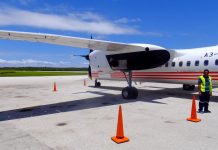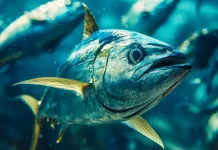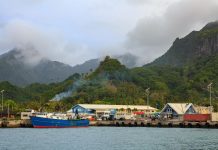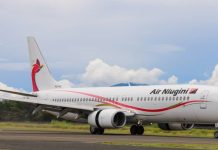By Kishti Sen & Tom Kenny
It’s been a tough time for Pacific island economies. The COVID-19 pandemic and associated global supply chain disruptions along, with mobility restrictions, impacted commodity exporting countries while closed borders meant the tourism dependent economies were decimated in 2020.
With international borders remaining closed and many local restrictions still in place, economic conditions will be challenging for the rest of 2021. Governments are handing down higher spending budgets to support demand and businesses while diversifying their economies. However, Pacific island governments with limited resources do not have the fiscal firepower to run large stimulus programs like the developed world.
The good news is, with the help of development partners, vaccinations are proceeding well – raising hope for a tourism-led economic recovery from the first quarter of 2022 for Samoa, Vanuatu and Tonga. Cook Islands is on a path to an economic recovery with a safe travel corridor with New Zealand. On reaching 80 per cent vaccination coverage, Timor-Leste, Kiribati and Solomon Islands should see fewer restrictions on local and international travel in 2022 which will boost trade in goods and services.
Private money transfers to the Pacific islands are exceeding expectations. With tourism on hold, remittances have become the largest foreign exchange earner for several Pacific island countries and are helping minimise the need to dip into a nation’s foreign reserves to pay for imports.
Total remittances to Samoa lifted sharply in 2020 to WST607 million (US$236 million) (+11 percent year-on-year), Tonga received TOP398 million (US$177 million) (+14.3 percent) while Vanuatu accumulated VUV6 billion (US$53 million) (+2 percent). For the first half of 2021, private transfers are at levels similar to 2020. Low unemployment rates in key source markets and New Zealand’s recruitment of more Pacific labour in the coming months should lift remittances to near record levels this year.
The Pacific’s shared identity of ‘stronger together’ is underwriting the strong inflows of remittances and supporting household budgets.
This is a difficult period for Pacific island economies. International tourism, a mainstay for several economies, has been on hold since April 2020. Gross domestic product (GDP) has fallen sharply, unemployment has shot up and many businesses are experiencing negative cash flows.
Kiribati, Solomon Islands and Timor-Leste have smaller tourism industries. They depend on commodity exports – tuna for Kiribati, logs for the Solomon Islands and oil for Timor-Leste – so they are relatively sheltered from the collapse of tourism. Nonetheless, mobility and international travel restrictions have kept COVID-19 at bay.
Domestic economy supported by record remittance flows
New government expenditure in the initial responses to the COVID crisis ranged from 1.6 percent of GDP in Samoa to 8.3 per cent for Timor-Leste. Fiscal policy is still supporting demand and all governments are handing down large spending budgets despite taking hits to revenue.
Total borrowing requirements of Pacific island governments have lifted to fund larger fiscal deficits. However, nearly all governments have secured cheaper external loans from multilateral and bilateral development partners. This has reduced debt servicing costs as the offshore loans were negotiated at exceptional terms, both in terms of rates and tenor.
States are likely to secure more budget support loans from multilateral organisations to keep the cost of debt down. The International Monetary Fund (IMF) recently said it would top up the special drawing rights (SDR) allocation for member countries to provide liquidity support. The alternative for governments would be to tap the more expensive domestic market which would put upward pressure on the cost of debt and raise concerns about affordability. However, the risks of this are low as Pacific island states maintain good support from development partners as shown by the terms of recent loans.
The AUD$2 billion (US$1.4 billion) Australia Infrastructure Financing Facility for the Pacific (AIFFP) will also help investment and job creation. A pipeline of AUD$300 million (US$217 million) will be rolled out in the second half of this year.
Cook Islands
Border closures early in 2020 helped Cook Islands avoid any COVID-19 cases. They also shut down the islands’ tourism industry which led to a 26.2 percent decline in GDP. Nonetheless, in May, Cook Islands opened a safe travel corridor allowing quarantine-free travel with New Zealand, its key source market. Demand has been good and nearly 7,500 New Zealanders arrived in Cook Islands in May and June.
With almost all the islands’ adult population fully vaccinated, Cook Islands is on relatively firm ground to begin an economic recovery.
Kiribati
Prior to the pandemic, the Republic of Kiribati’s economy was performing remarkably well with average GDP growth nearly 5 per cent over the 2015–19 period. This was well up on the 1.5 per cent annual average growth recorded during the 2000–14 period. Government expenditure makes up 65 per cent of GDP.
Then came the pandemic. Strict containment and lower external demand led to a 34 per cent drop in fishing revenue to AUD$150 million (US$108 million) in 2020. The services sector, including restaurant and hotel services, transportation and other business activities were also hit by the fall in tourism. Planned large construction projects were delayed because of restrictions on the movement of personnel and materials.
Even though the government kept up its budgeted spend and implemented a COVID-19 response package (equivalent to 4.9 per cent of GDP), real GDP is estimated to have declined by 0.5 per cent in 2020. ANZ Research is forecasting GDP to track sideways this year but recover in 2022 if restrictions ease, assuming a successful vaccination rollout.
Samoa
The new Samoan government will likely set a new fiscal course as it steers the economy out of the 2020-21 recession caused by the shutdown of the tourism industry. GDP is estimated to have declined by 12.5 percent in the 2020-21 financial year.
The people of Samoa are incredibly resilient and have bounced back from previous epidemics (dengue, zika virus, typhoid and measles) and from natural disasters including cyclones, floods and tsunami. Restarting tourism will be critical but a solid sense of community and desire to fight back gives Samoa a strong platform for economic recovery.
Solomon Islands
The economy of Solomon Islands contracted by 4.3 percent in 2020, taking the nation into its first recession since 2004. Global supply disruptions, lockdowns and closed borders impacted manufacturing, logging, fishing and tourism. Formal sector employment fell by 6 percent year-on-year to 57,028 in December 2020 which in turn reduced wholesale and retail demand.
GDP is expected to partially rebound in 2021 (by 1.8 percent) before strengthening to 4.6 percent in 2022. Soft growth this year is due, in part, to the five-month delay of the 2021 National Budget. Also delayed due to pandemic-related restrictions was the start of the USD$251m Tina River Hydro project.
Tonga
Tonga is one of a handful of countries that so far has recorded zero cases of COVID-19. Lessons from a measles outbreak in 2019, early border closures, strict enforcement of international border restrictions, overnight curfews and COVID-19 protocols have served Tonga well.
But while Tonga avoided a health emergency, mobility restrictions impacted external and domestic demand which led to an unavoidable fall in economic activity. Tourism accounts for 15 per cent of GDP so Tonga was relatively sheltered from international travel halting in 2020. Nonetheless, GDP is estimated to have declined by 0.8 per cent and 2.5 percent in the 2020 and 2021 financial years, respectively.
Tonga’s government passed a TOP584 million (US$260 million) budget for 2021-22, which is up 21.5 percent on the 2020-21 budget. The additional stimulus should support the economic recovery.
Vanuatu
Vanuatu’s tourism-dependent economy was hit hard by COVID-19 border closures in 2020. With zero visitor arrivals for most of the year, its international tourism industry was decimated. Most of the 11,500 strong tourism workforce lost jobs with businesses, especially in Port Vila and Luganville, which experienced negative cash flows and were under severe pressure to survive. It’s estimated GDP declined by 12.6 per cent in 2020 with new government expenditure preventing a larger contraction.
With tourism on hold, the government wants to broaden the base of economic drivers to kick-start an economic recovery. This is understandable. Many households depend on crop production and there is a growing world demand for premium crops such as kava, cocoa, coffee, copra, pepper and vanilla. However, to realise the potential in agribusiness, Vanuatu needs economies of scale and major investments in infrastructure to unlock supply bottlenecks including transport and product preservation and processing, which could take years.
Timor-Leste
The Timor-Leste economy has been in a state of flux with authorities trying to work out how best to lift the nation’s status to an ‘upper middle income’ country by 2030. But the optimal path to achieving this hasn’t been settled on. Should the state be channelling money directly into the health and education and labour-intensive agriculture or should it be commercialising the country’s resources and using the proceeds to build infrastructure? This is a common policy debate amongst authorities.
According to the Ministry of Finance, the economy declined by 8.5 percent in 2020 due to the pandemic disruptions to mobility and demand, both domestic and external. This preliminary estimate marks the nation’s largest fall in GDP since gaining independence in 2002. The 2021 National Budget was passed in December and some certainty in appropriation will boost confidence and help the economy recover from its worst recession on record.
Kishti Sen is International Economist and Tom Kenny is Senior International Economist at ANZ
This article was adapted from an ANZ Research insight
SOURCE: BLUE NOTES ANZ/PACNEWS






